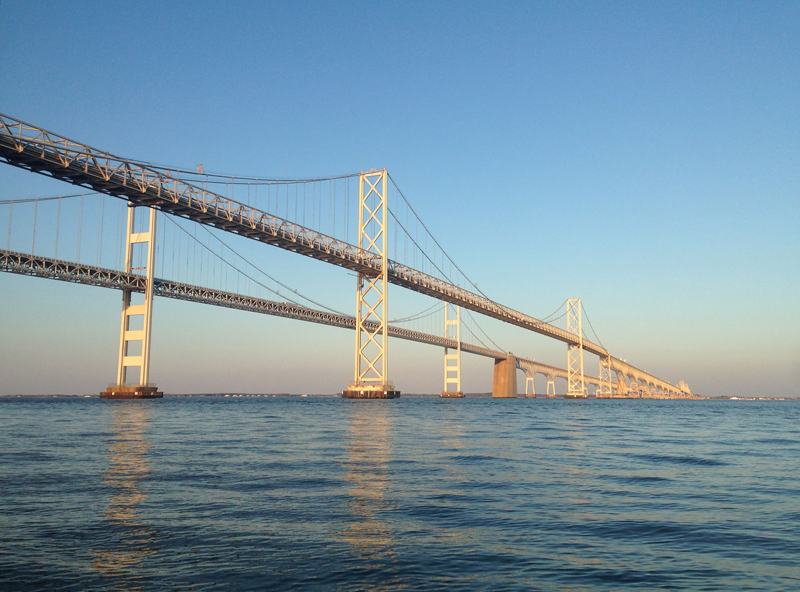The state of Maryland seeks public comments on a draft Chesapeake Bay restoration plan.

The draft Phase III Watershed Implementation Plan represents the next step in Maryland meeting its commitments as part of a multi-state Bay restoration effort. Maryland developed the draft plan to meet targets by 2025 using a locally driven, stakeholder process to identify achievable pollution reduction strategies that balance responsibilities across wastewater treatment plants, urban stormwater runoff, septic systems, and farms.
This draft plan is the first to factor in the potential impacts of climate change in addition to a first-ever restoration plan specifically for the effects of the Conowingo Dam on water quality in the lower Susquehanna River and the Chesapeake Bay.
Maryland continues to value a collaborative process, with several regional meetings and a webinar scheduled this spring to guide local governments and other stakeholders through the process. All comments received by June 7, 2019, will be considered. Maryland’s final plan is due to the U.S. Environmental Protection Agency (EPA) in August.
“The Chesapeake Bay is a top priority and this comprehensive plan keeps us on track to meet our restoration goals and show continued regional and national leadership,” said Governor Larry Hogan.
“The Governor’s Chesapeake Bay Cabinet is committed to ensuring this locally driven, science-based plan benefits from the comments and recommendations from local governments and the public,” said Maryland Environment Secretary Ben Grumbles.
Total Maximum Daily Load and Watershed Implementation Plans
In 2010, the EPA established the Chesapeake Bay Total Maximum Daily Load (TMDL) to reduce the amount of nitrogen, phosphorus, and sediment polluting the Bay and its tributaries. This “pollution diet” is the scientific estimate of the maximum amount of these pollutants the Bay can receive to remain healthy and meet water quality standards.
Maryland, the other five Bay watershed states, and Washington, D.C., were required to develop three phases of Watershed Implementation Plans (WIPs) with roadmaps to reduce water pollution by the required amounts. As part of Maryland’s Phase II plan, counties across the state developed pollution reduction plans. The draft Phase III plan – developed by the Maryland departments of the Environment, Natural Resources, Agriculture, and Planning in collaboration with the others that make up the Governor’s Chesapeake Bay Cabinet – builds on that previous work. Each new plan incorporates improved data, improved understanding of natural systems, and enhanced modeling tools to better determine pollution rates.
Maryland’s draft Phase III plan Executive Summary states: “Having reached the mid-point between development of the 2010 Total Maximum Daily Load (TMDL), which establishes current Chesapeake Bay pollution reduction goals and the ultimate 2025 restoration deadline, the good news is that healthy signs of recovery are being seen in both water quality and living resources like Bay grasses and blue crabs. This third phase of Maryland’s Chesapeake Bay Watershed Implementation Plan (WIP) identifies the strategies, opportunities, and challenges in not only meeting the 2025 Chesapeake Bay Restoration targets, but also sustaining restoration into the future.”
Public Comments Sought
MDE, in conjunction with the Maryland Department of Agriculture and the University of Maryland’s Harry R. Hughes Center for Agro-Ecology, conducted 11 regional workshops in 2018 to inform participants about the WIP process and obtain feedback. Three information sessions and one webinar to be held this spring will feature an overview of the draft Phase III WIP and provide the opportunity to ask questions of state agency representatives. There is no cost to participate in the sessions and webinar. They are sponsored by the Harry R. Hughes Center for Agro-Ecology and funded by the Town Creek Foundation.
For information on the meetings and webinar, including links to register, and for information on submitting formal comments, visit: mde.maryland.gov.
To view the draft plan, click to the Phase III Watershed Implementation Plan.